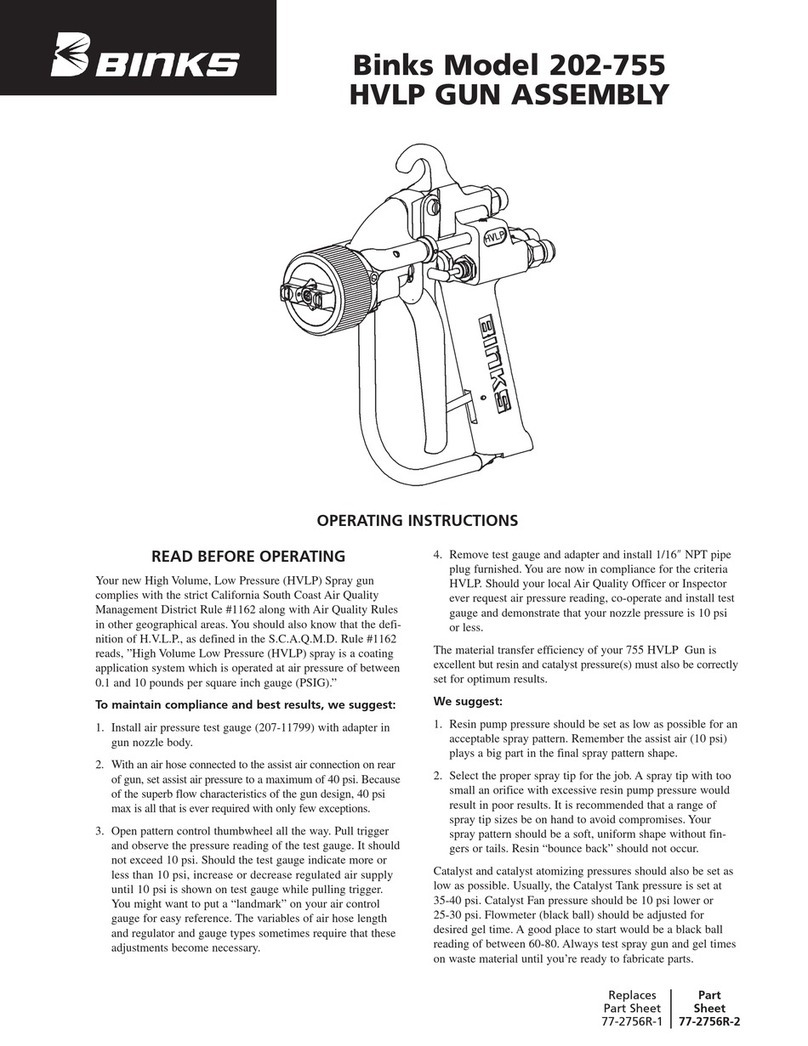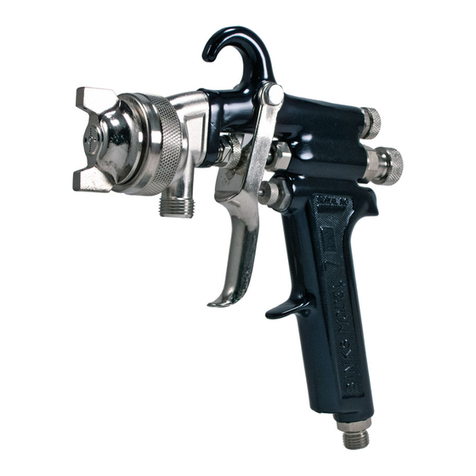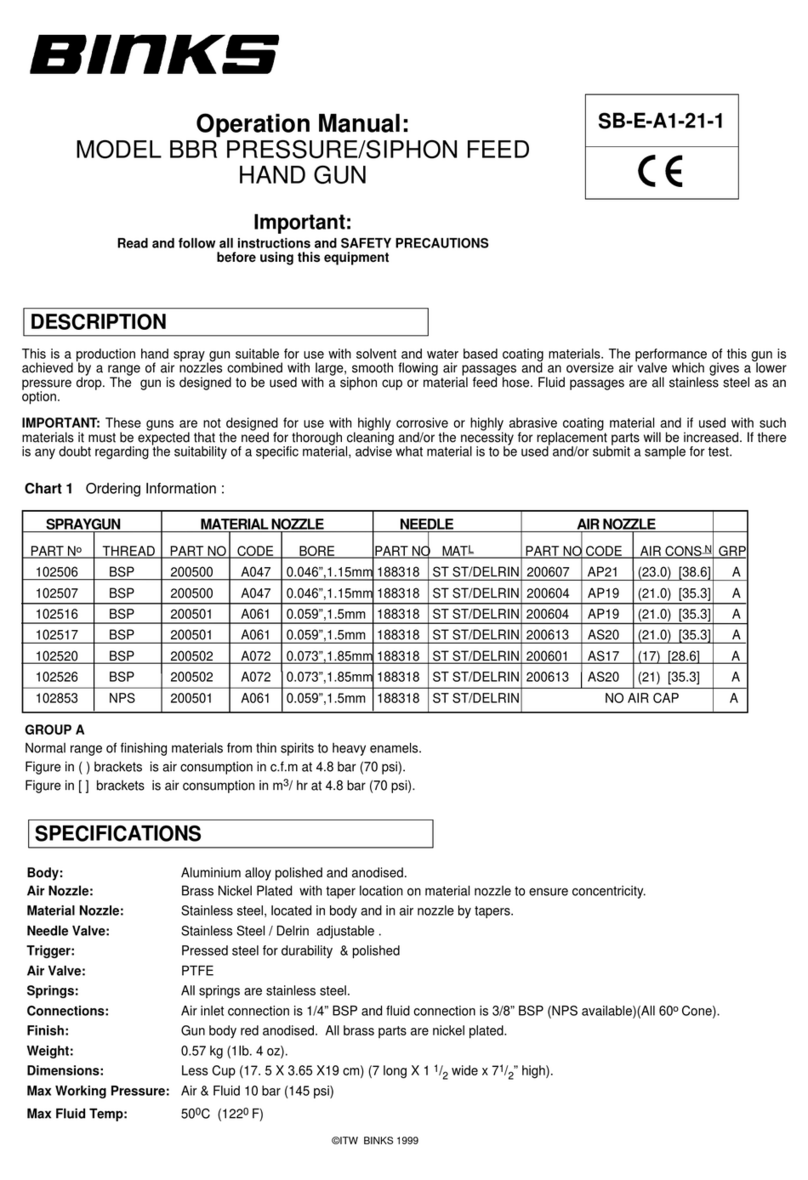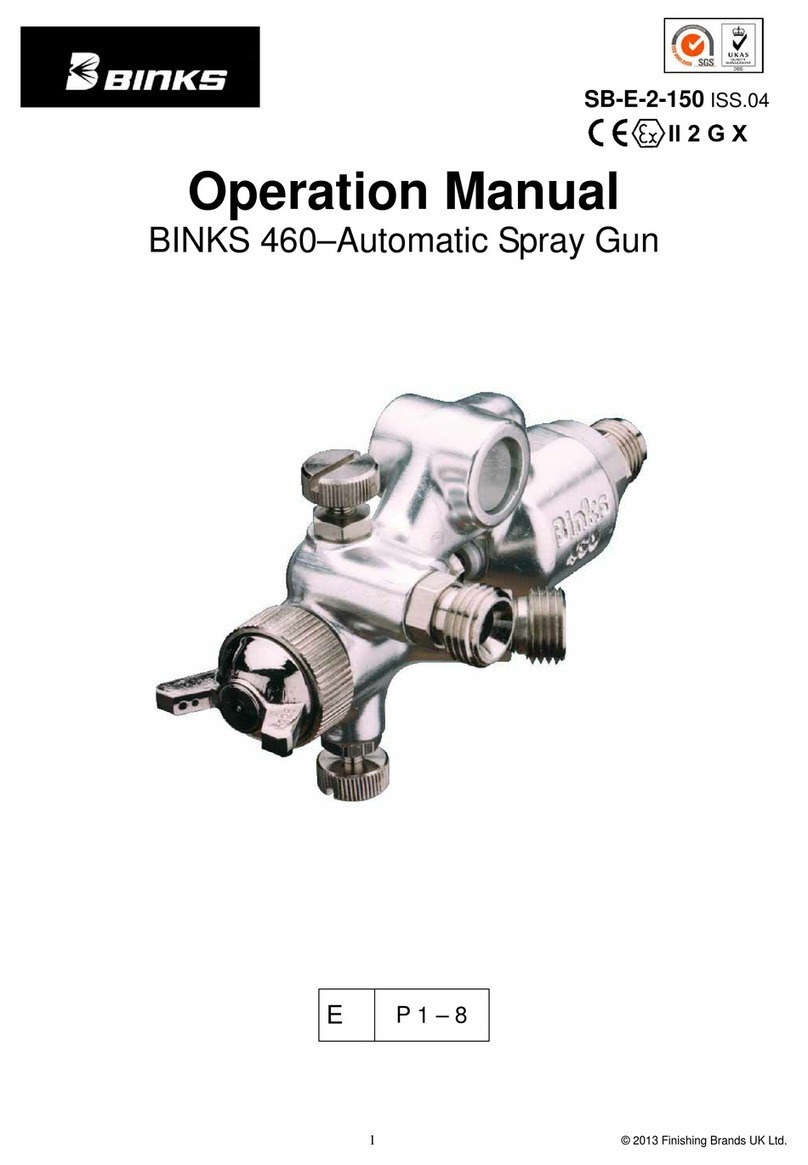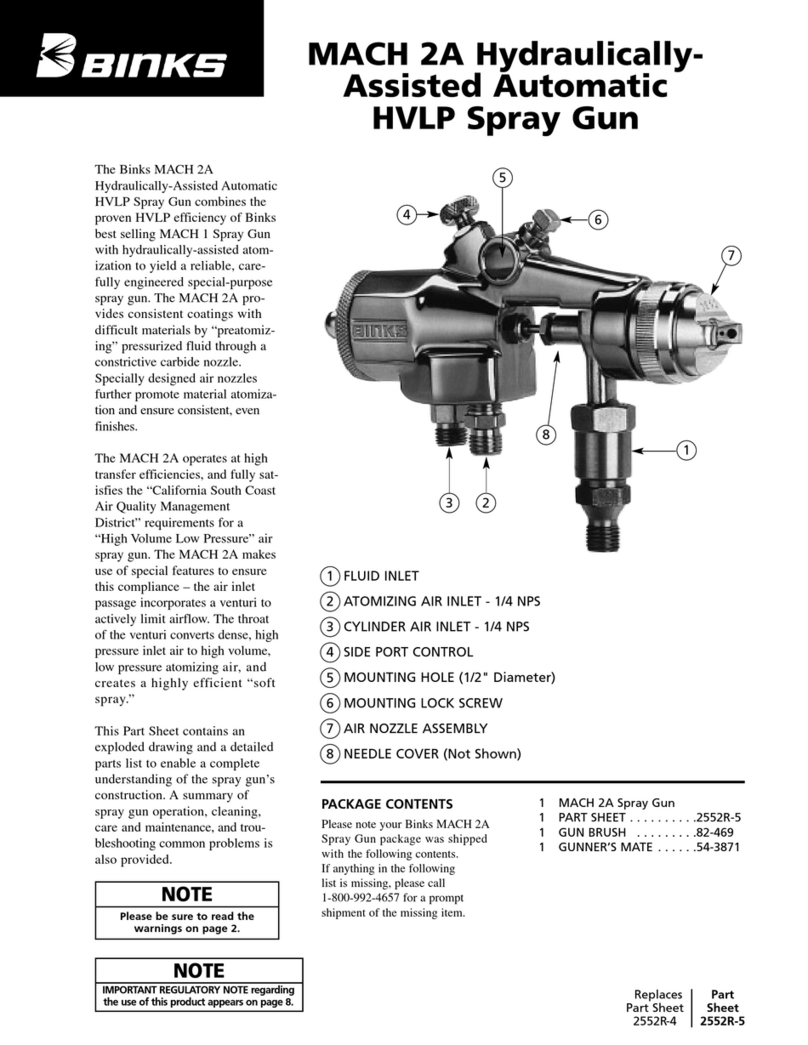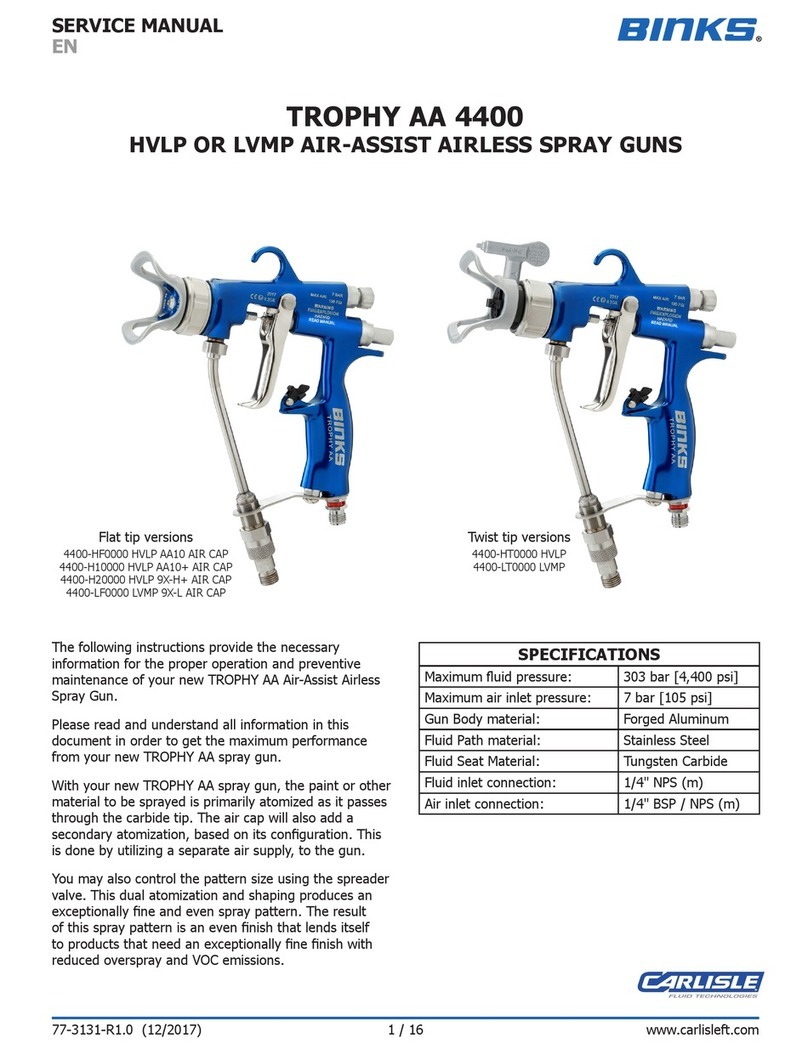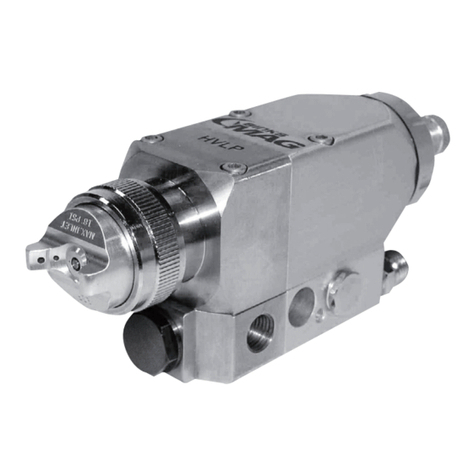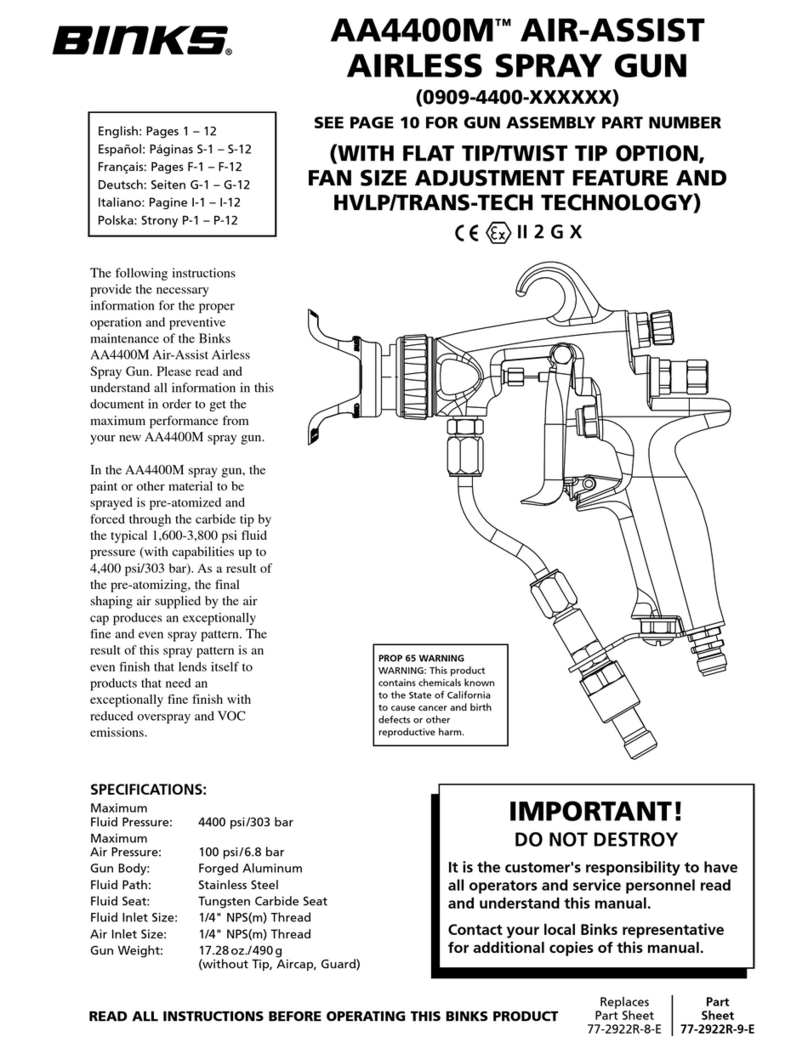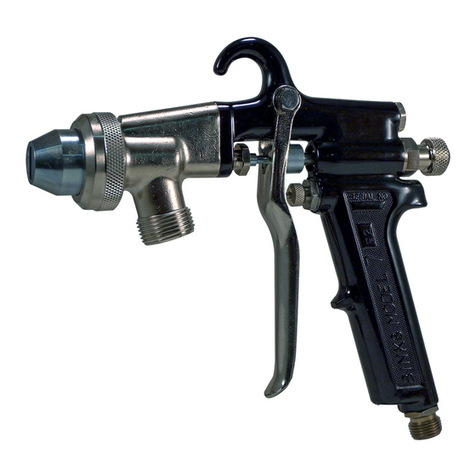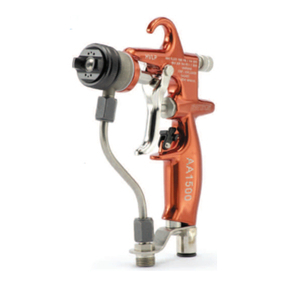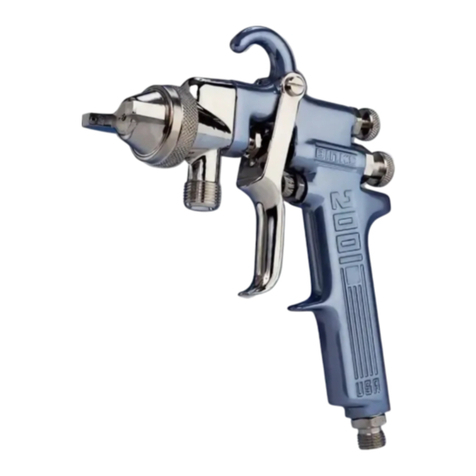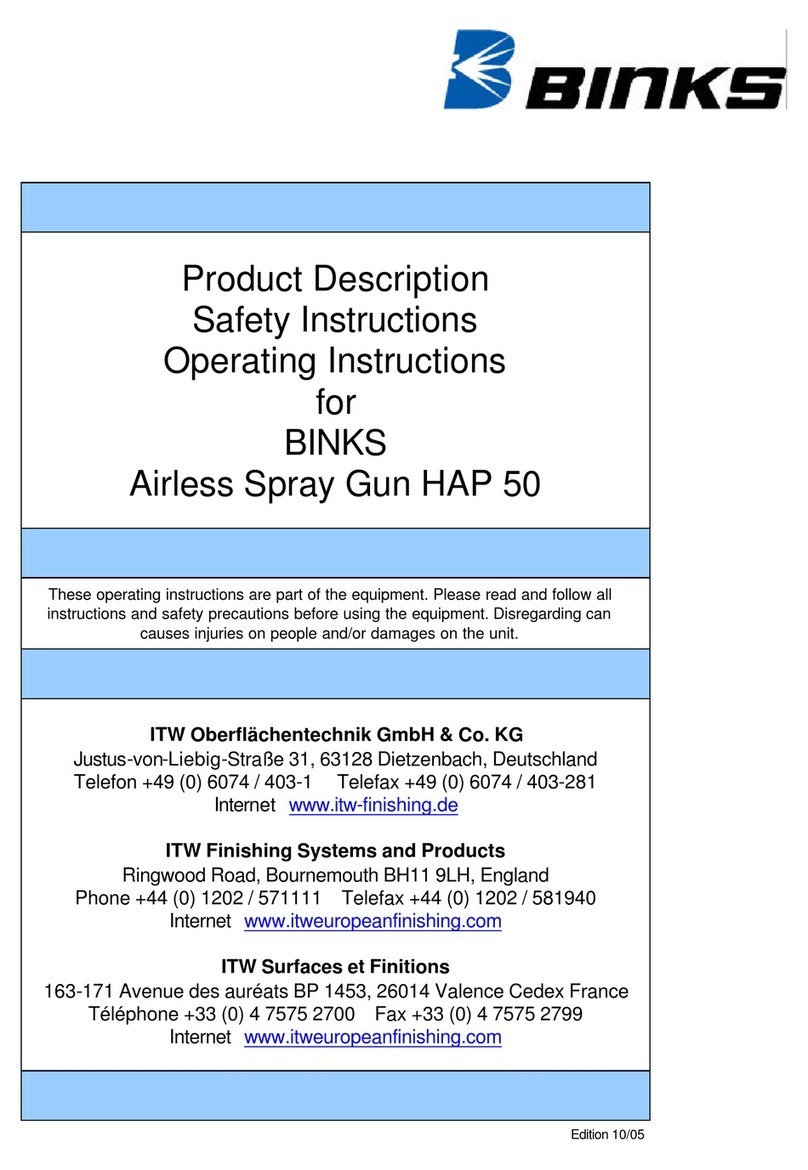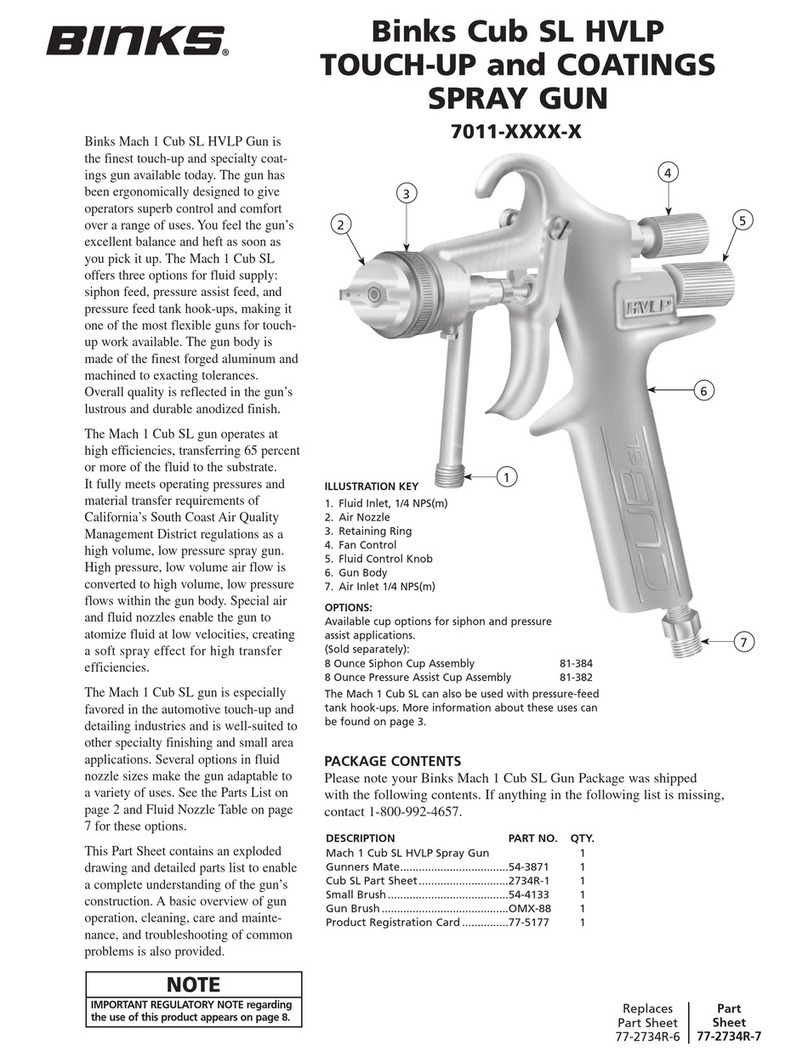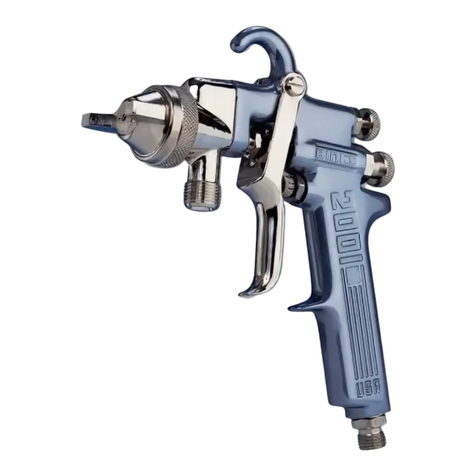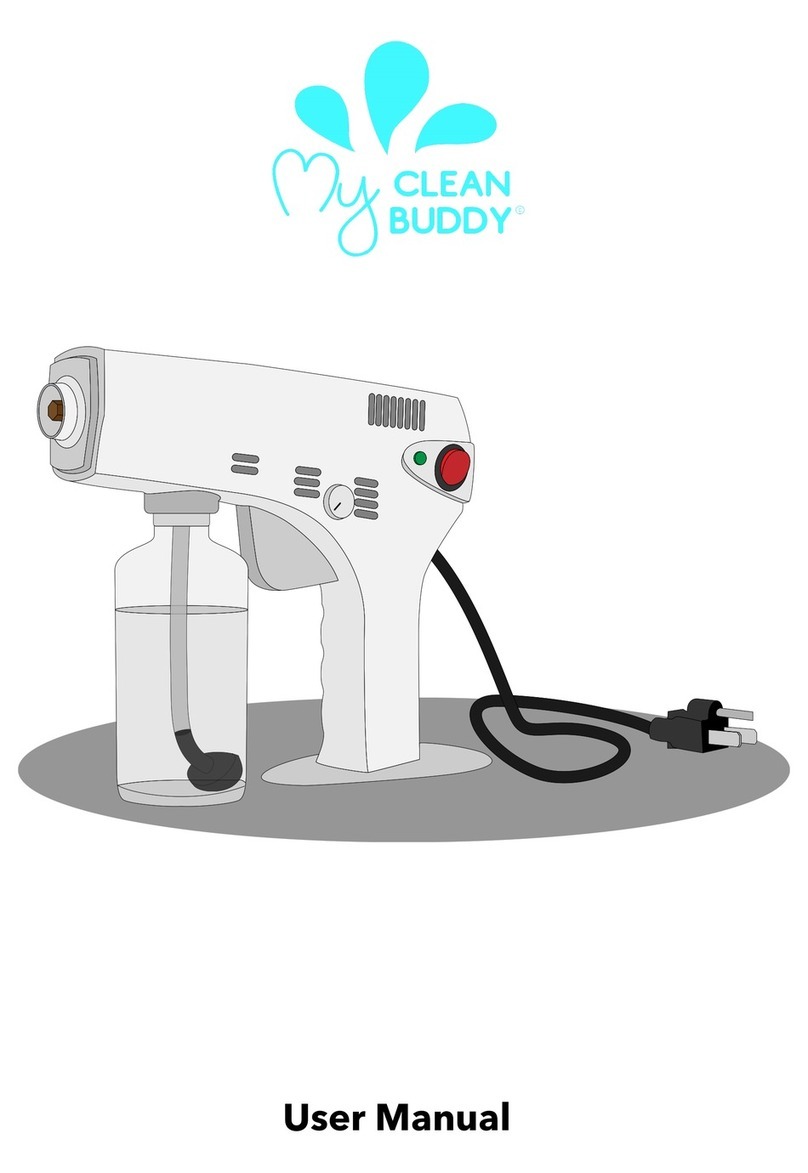8
4. SAFETY
As well as the operating instructions and the applicable legal and other mandatory regulations
relevant to accident prevention in the country of use and at the place of use, you must also
observe the recognised special engineering regulations governing safe and professional
working practices.
4.1 PRINCIPLE OF OPERATION; INTENDED USE
1. BINKS airless spraying equipment has been built to comply with state-of-the-art standards and
recognised safety rules. Nevertheless, its use may constitute a risk to life and limb for the user
or for third parties, or cause damage to the BINKS airless pump and other assets.
2. The BINKS airless pump must only be used in technically perfect condition in accordance with
the regulations and the instructions set out in the operating instructions and only by safety-
conscious persons fully aware of the risks involved. Any malfunctions, especially those affect-
ing safety, must be rectified immediately. The spray material line must not be dragged across
sharp-edged objects and must always be checked before use to ensure that it is in perfect
condition.
3. BINKS airless pumps are designed exclusively for the designated use stated in Section 1. Us-
ing them for purposes other than those mentioned is considered contrary to the intended use.
The manufacturer/supplier cannot be held liable for any damage resulting from such use. The
user alone must bear the risk.
4. The manufacturer is not liable for any unauthorised modifications or repairs made to the
BINKS airless pump.
5. In accordance with the professional association directives governing jet stream units, ZH 1/406,
paint spraying equipment should be checked by experts on request, or at least every 12
months, to ensure that there is no risk involved in its continued operation. If the units are idle,
the examination can be delayed until the next period of operation. The operator is obliged to reg-
ister the equipment for testing and to keep written records of the results of such testing.
4.2 SAFE WORKING CONDITIONS
1. The requirements of the (German) accident prevention and safety regulation “Working with sur-
face coating compounds” (VBG 23) and the (German) directives governing jet stream units (ZH
1/406) and static electricity (ZH 1/200) provided by the professional associations, must be ob-
served.
2. Every person using a BINKS airless pump must have read and understood the operating
instructions, in particular the chapter on “Safety”.
3. If work is to be carried out in enclosed areas, effective, technical ventilation must be provided.
4. Use only those spray material lines and airless guns that are designed for use at the relevant
maximum permitted working pressure of the spray material pump.
5. Be careful that there are no sources of ignition in the vicinity, for example, an open fire, sparks,
glowing wires, hot surfaces, burning cigarettes, etc. There must be a distance of at

